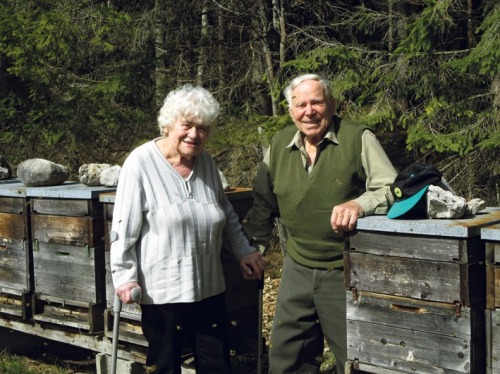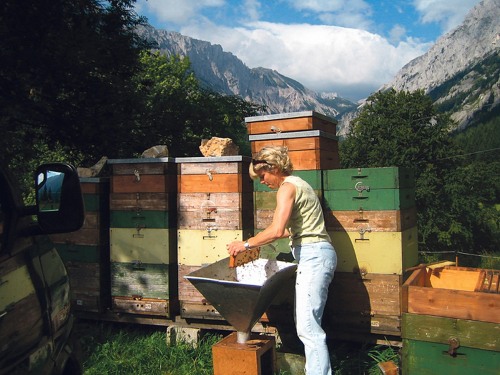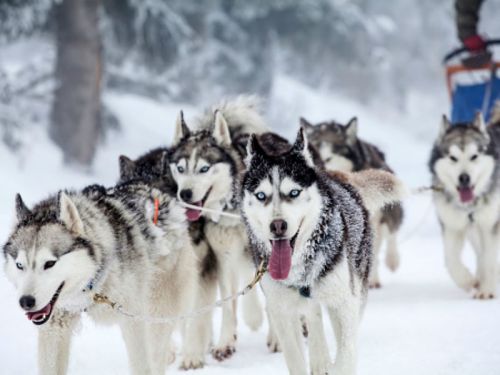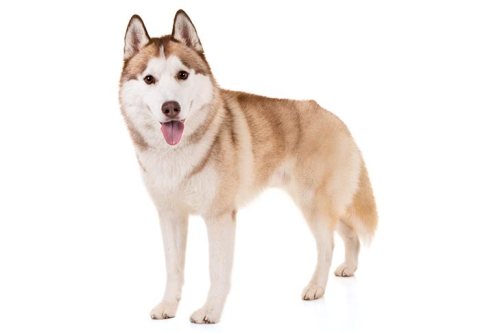One of the most widespread legends in beekeeping is that when you cross almost anything with Carnica bees, the result will be angry bees, almost unbearable mongrels.
That was true. However, it is not true anymore.
In 2006 I had the honour to meet Harald Singer, the son of the world-famous bee breeder Wolfgang Singer. When we sat down in the restaurant table, I told him about my experiences of their Carnica queens. Hunajayhtymä Ltd. had been importing Carnica Singer queens for years and in the early 1990s I bought 5 of them. Tradename “Carnica-Singer” was painted with red on the cages.
These Carnica Singer queens surprised me. They had all max 5- 6 frames of brood (Jumbo frames) in the peak season.
“Impossible!”, answered Harald. “Our queens make a big brood area.”
For a second I had doubts about the origin of my Singer queens, and had there not been the name “Carnica-Singer” on the cages and had the importer not been Hunajayhtymä, the largest beekeeping company in Finland with years of co-operation with Singer, the doubts could have been justified. But now this contradicting information had to be solved otherwise.
And the answer is breeding.

Picture: Liane and Wolfgang Singer
Bee breeders have been selecting for good honey crop, good temper and low swarming for a long time. Genes enabling these qualities have multiplied in population long enough: different races have become almost indistinguishable. Today, one could argue that colour remains the only thing to separate a Carnica from Buckfast. Crossing good breed Buckfast with good breed Carnica results in marvellously good bees.

Picture: Heidrun Singer in continuing the work of her parents.
The best Finnish Italian bees are remarkably close to good Buckfast and good Carnica bees in their performance qualities. And with ”good” I mean bees bred by distinguished breeders, not cheapest ”race” queens found in Internet. If only there were more serious breeders, we could see a third race become identical twin. Today in Finland we have a situation where the Italian bees of Finland are too much considered as something permanent and immortal. From the 1950s the Finnish bee breeders have bred for winter hardiness and for lower consumption. The excessive egg laying and lavish spending of stores have been rooted out. Finnish Italian bees have raised well deserved interest among bee breeders in Central Europe.
It is no secret that genes from “original” black bees, Apis mellifera mellifera, made this change. Not original, because honeybee in Finland in not indigenous, they have been imported by man late 16th century, mainly from Estonia and Sweden.
Large brood area is the main factor influencing honey gathering ability of a beehive. Singer Carnica was bred for a good honey crop and, little by little, selection pressure changed the nature of Carnica Singer. They were no longer small brood area bees.
Originally Carnica bees had yellow markings in upper corners of abdomen. Today these yellow, or leather brown, markings are almost extinct, thanks to tightened and unnatural race breeding instructions. (Naturgeschichte der Honigbienen by Friedrich Ruttner, 2. Auflage, pages 90 and 94)

Years later I made another experiment with Carnica bees, bought 6 queens, this time of German origin. They were exceptionally good bees. I cannot say anything bad. Large brood areas, good temper, excellent honey crop and no inclination to swarm. If I had not known their origin, I would have had difficulties separating them from dark line (Primorski) Buckfast.
When we breed for certain qualities, certain genes become more widespread. This a general phenomenon.

Picture: Alaskan sled dog
One example comes from the world of dog breeding in Northern America.
https://bmcgenet.biomedcentral.com/articles/10.1186/1471-2156-11-71
“Alaskan sled dogs are a recognized population of dogs of Northern breed ancestry. While not recognized by the American Kennel Club as a distinct breed, consistency in behaviour has led to them being informally referred to as a ”breed”. The Alaskan sled dog is comprised of several different lineages, optimized for different racing styles. The Alaskan sled dog is unique in that it is not confined to a breed standard of size or appearance, as are most AKC-recognized breeds. Rather, they are a mixed breed dog. We know little about the starting stock of Alaskan sled dogs.”
Siberian Husky is a recognized breed by American Kennel Club(AKC). Alaskan sled dog, however, is not, because of its mixed and unknown origin.
Those Alaskan sled dogs which have been bred for long distance races resemble Siberian Husky dogs in their genes.
The race definition of Siberian Husky (AKC): “The Siberian Husky, a thickly coated, compact sled dog of medium size and great endurance, was developed to work in packs, pulling light loads at moderate speeds over vast frozen expanses.”

Picture: Siberian Husky
It is important to take care of various bee races. Many of them are endangered. But we must bear in mind that if we keep bees in modern beehives and universally favor the same beekeeping goals, good honey gathering, good temper, low swarming etc, we might be doing a disservice. It is more important is to protect endangered genes than races. Other solution is to keep bees in nature like hives, for instance log hives.
Race is a man-made definition; gene is a creation of Nature.
[…] Genes and Races […]
TykkääTykkää
hi juhani,what i learnt is wild population of a certain race will always remain pure in it’s home land if it get isolated due to geological adaptation and outbreeding reduction phenomenon
even hybrid specimens will obtain the previous pure race genetic make up over few generation of adaptation
TykkääLiked by 1 henkilö
Yes, but…
1. Where do you find these big enough isolated places? Nowhere.
2. If pure race hives are held separately and in isolation by beekeepers, then those beekeepers make selection based upon productivity, honeycrop swarming, etc., which is against nature. Therefore a natural race (=race before human influence) cannot exist.
TykkääTykkää
yes that’s exactly what i mean it happens when there would be no human interpretation for economic aims just little population of wild colonies,we got some of these relatively big areas in iran very remote mountains high altitude over 2000meters above sea level ,very harsh winters and late springs, there are colonies sometimes very big
and old between the cliffs,i going to collect some specimens and examine the morphologic characters ,varroa resistance and..i want to use some of them to cross with buckfast and evalute the results,yes they maybe not as pure as 50 years ago but they are closest specimens to those pure bees,
TykkääLiked by 1 henkilö
[…] my most popular blog writing “Genes and Races” I outline the possible dangers of bee breeding if, and when, all breeding aims to similar […]
TykkääTykkää